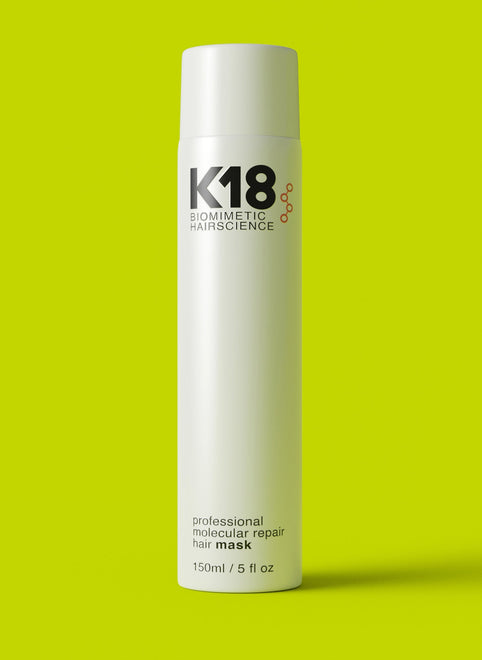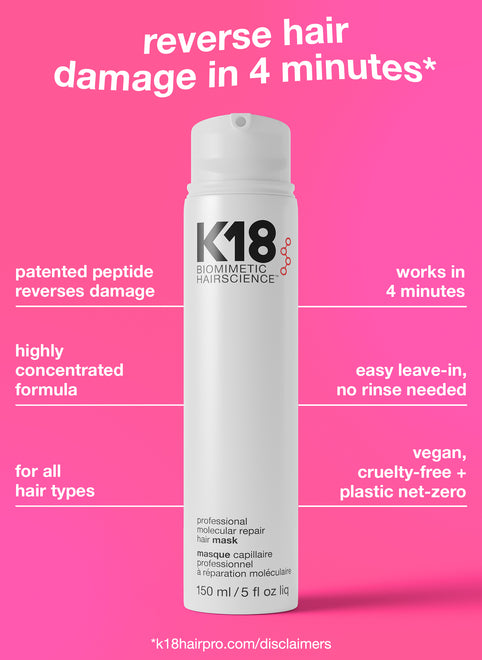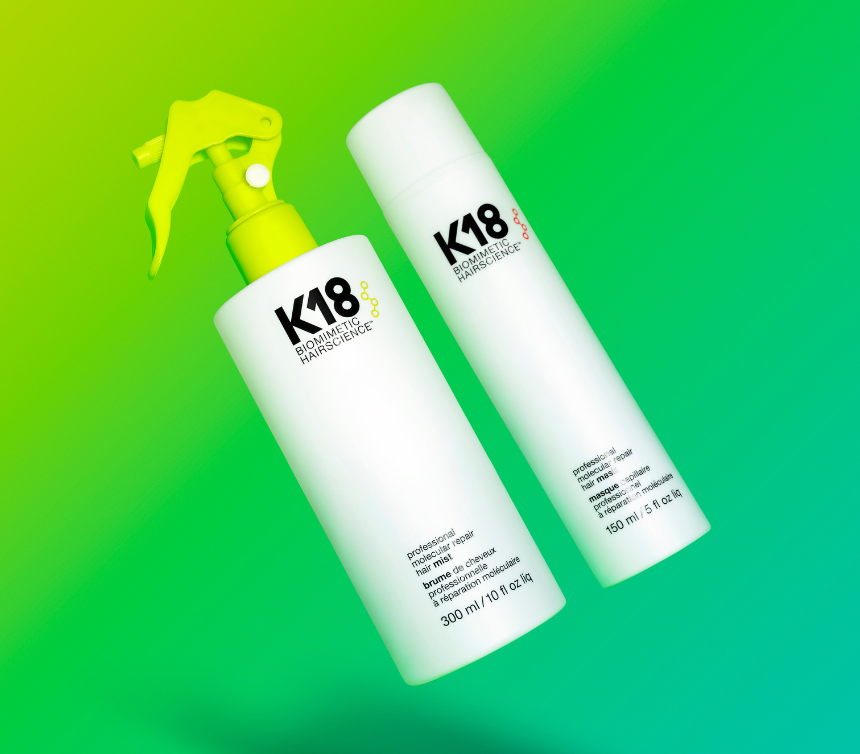Let’s dive in.
heat damage 101
Before we get into heat protectants, let’s chat about what they’re actually protecting your clients from—heat damage. Excessive heat degrades the cortex and damages the keratin chains responsible for your client’s hair’s health + elasticity. This results in dry, lackluster, or frizzy hair. Yikes.
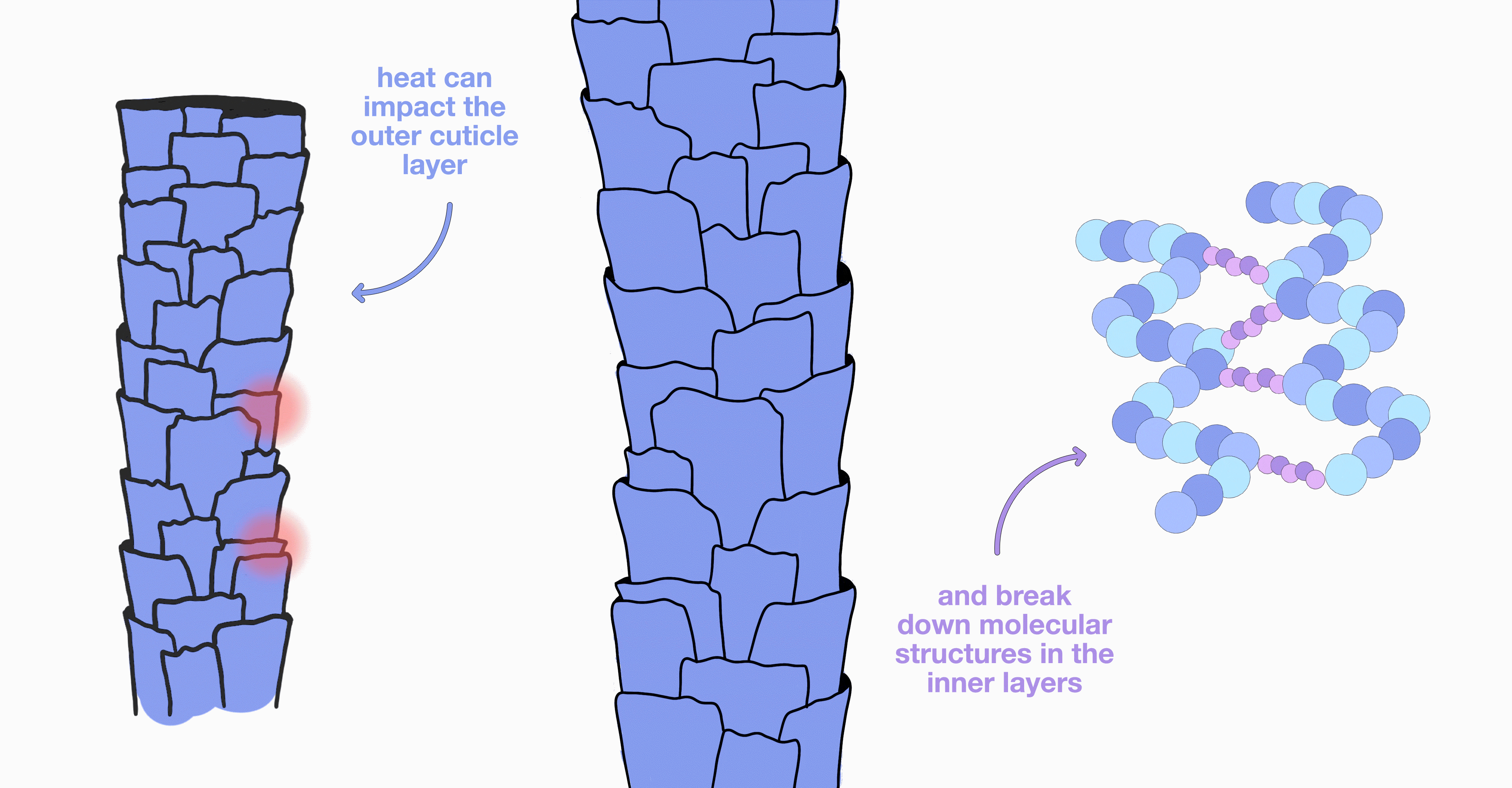
It’s even worse on wet hair, as too high of a temperature can trap water molecules between keratin chains in very wet hair. These molecules are heated to their boiling point without a clear path to escape (think of a boiling tea kettle inside of each strand), causing bubble deformities to form in the hair shaft. This leads to the deterioration of the outer cuticle layer and further hair breakage. Curious about the science? Read more about heat damage here.
So yeah, heat protectants are pretty important.
where K18 comes in
Since heat damage is happening at multiple layers of hair, heat protection + damage reversal should too. At the innermost layers, our patented K18PEPTIDE™ in our molecular repair mask + oil reverses heat* damage (and bleach*, color*, and chemical service* damage too) with immediate and lasting results. That means you can restore strength, softness, smoothness, and bounce no matter how fried your client’s hair is.
At the outer layers, our molecular repair hair oil delivers 450°F (232°C) heat protection*. The star ingredients making this happen? Squalane, Hemisqualane, and Avocado Oil. We chose these for their ability to work together, with the latter having a high smoke point that resists breaking down until about 520°F. Thanks to these power players and weightless formula you can deliver even heat protection without weighing down your client’s strands. Best part is, you don’t have to choose between molecular repair and heat protection. Our oil does it all.
how we test for heat protection
It’s true. We’re all about the science here. That’s why we do rigorous testing to back up our oil’s heat protection claims in the lab. Since different oils degrade at different temperatures, we went with Avocado Oil for its high 520°F smoke point. Great for cooking with, but how does this apply to hair? Here’s how we put our oil’s heat-protecting properties to the test.
-v1686937642836.gif?3000x1562)
First, we had hair tresses with and without damage, treated with and without our molecular repair hair oil. These were damaged by 30 passes with a 450°F flat iron, with 10 seconds per pass. Then, they were combed 2,000 times with an automatic comber to cause mechanical damage. The number of broken hairs was measured and compared to the non-heat damaged control tress. In the end, the tresses with molecular repair hair oil saw less breakage, meaning that the product protected against mechanical breakage due to excessive heat damage.
In short: With our molecular repair hair oil, you can style with science-backed confidence.
See ya soon for more FUNdamentals.


.png?v=1695413339252&transform=resize=150x150)
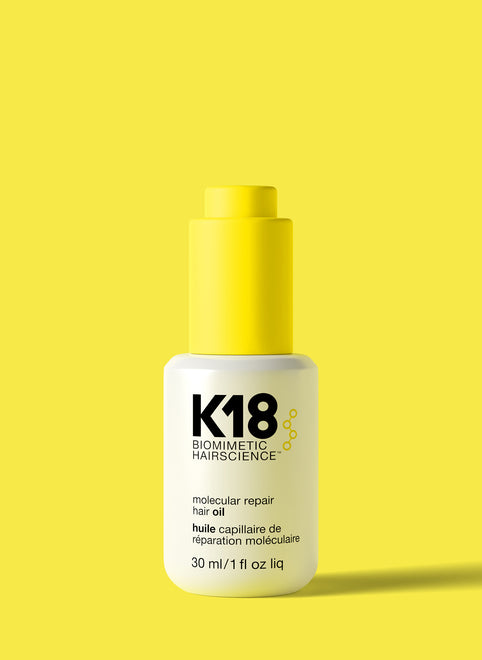
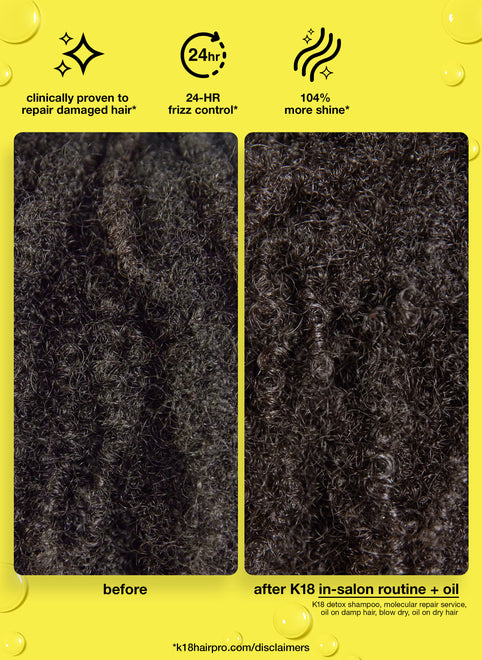
.png?v=1706135824299&transform=resize=150x150)
